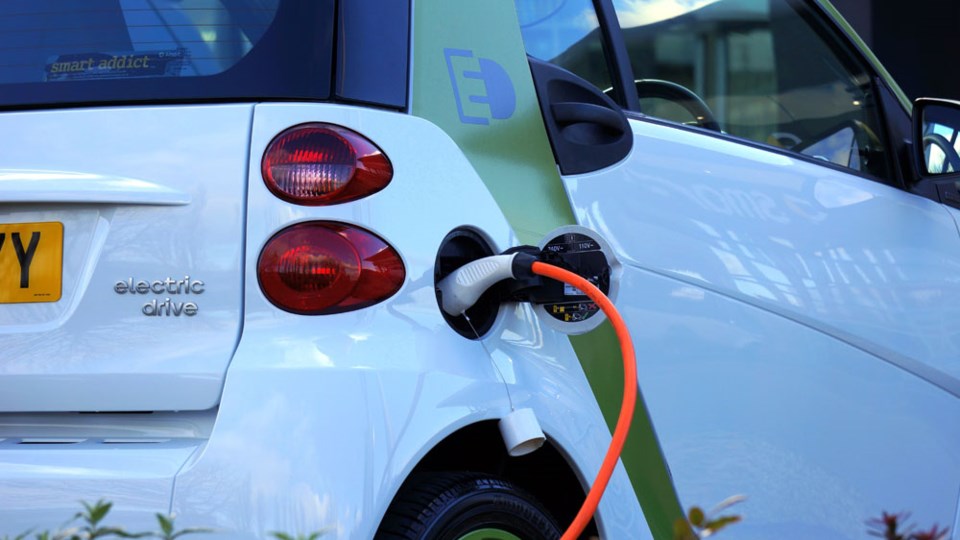When was the last time you got free gasoline from Ikea?
Most of the resistance to electric car ownership is based on mythical ‘range anxiety,’ the concern that an EV could run out of charge on a trip and leave its owners stranded.
It’s a fear largely unfounded as current generation vehicles push range well past 400km.
Our first trip to the Coquitlam store in GM’s battery-only Chevy Bolt EV was a happy lesson in range, EV chargers and just how cheap it can be to operate an electric vehicle.
We started from Squamish with a full charge. EV range is affected to some degree by temperature and since this was a warm spring day the dash displayed an estimated best range of around 450 km, plenty to make the round trip — twice. The Bolt is a driver’s car with taut handling and ample torque at any speed — an enthusiastic match for the Sea to Sky highway’s curves and grades and we arrived at Ikea with big smiles on our faces.
We wondered if the store might have joined the growing ranks of businesses offering EV charging stations in their parking lots.
Not only are there four charger spots but they are reserved right next to the entrance.
This was one of our first encounters with a public charger so even though we didn’t need it, we decided to give public charging a try for the cause of journalistic investigation. The ‘level 2’ charger was a commercial unit and it asked for a credit card, so we tapped and headed into the store to shop for furniture with unpronounceable names.
Non-Tesla electric cars, like the Bolt, the Nissan Leaf, Hyundai Kona, plug-in hybrids (and Teslas with an adaptor) use basically the same compatible chargers based on the SAE J1772 standard.
To greatly oversimplify the technology, EV chargers come in three levels, offering different charging speeds. Most EVs have a basic ‘level 1’ charger in the trunk that plugs into a standard 110 volt socket. It’s so slow it’s basically for emergencies — the equivalent of 4km of range per hour.
Level 2 chargers are more practical and common as household units and ‘complimentary’ public stations.
These require 220 volts like a clothes dryer and usually must be installed by an electrician. Plugged in like a cell phone at night, a car takes about nine hours to go from completely ‘empty’ to fully charged, although 80 per cent of that capacity is reached more quickly.
The fastest charging option is ‘level 3’.
These are high-power, direct current, commercial grade, mostly ‘pay to charge’ units intended for locations like parking lots.
They are also really fast — providing roughly 80 per cent of charge in about 30 minutes, enough time for a rest stop and a quick lunch.
There’s a level 3 charger at Squamish municipal hall.
If you are fortunate enough to own a Tesla, you can recharge even faster at a Supercharger station like the one in the back of Garibaldi Village mall. Non-Tesla cars are, alas, not able to use these chargers.
Most EV drivers will use public chargers only rarely. Virtually all my charging happens in my garage and with a range of over 400 km., local driving barely makes a dent.
We might plug in every couple weeks, or overnight if we are headed to Vancouver.
Great for homeowners, but here’s the problem. New strata developments and condos are increasingly required to provide EV charging stations in their parking lots, but what if you live in an older building with shared parking? Some strata councils will make the investment, others are still reluctant to install charging infrastructure that will only benefit EV drivers. If you want an EV and have shared parking, you may have to rely on a public charger while you plead your case to your strata council. Since a full charge provides many days of motoring and public chargers are proliferating, this is far less of an issue than one might think. When level 3 fast chargers start popping up in Petro Canada stations as the company has recently announced, concerns over charging options will quickly evaporate.
In the meantime, with gasoline prices headed skyward and both levels of government offering generous grants, demand for electric cars is exploding. Interestingly, this rising demand for public charging is driving a new auto etiquette. It is, I discovered, bad form to leave your car plugged into a public charger for more than a half hour when others are waiting.
Greg Pillon is a Squamish resident who heads Totem Electric, a not-for-profit public advocacy brand, that is an umbrella for EV information and experimental projects development.



